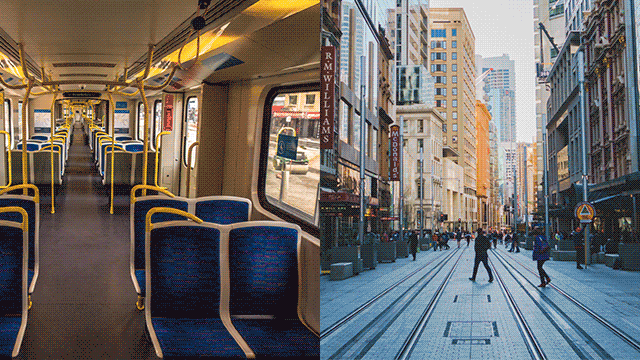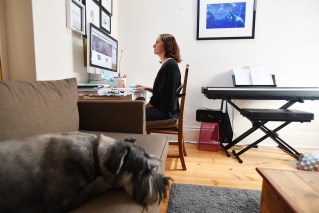Five ways COVID-19 may have permanently changed the way we live


Australians have shunned public transport and ditched cities for regions. Photo: TND
Australians have ditched trains for cars and spent large chunks of the pandemic working from home – and a new report from Infrastructure Australia suggests some of our behaviour changes could be permanent.
Requested by the Australian government in October’s federal budget, the report provides a comprehensive assessment of the ways in which COVID-19 has changed how Australians use “transport, water, energy, waste, telecommunications, digital, and social infrastructure”.
It also explores whether these trends and behavioural changes will continue after the pandemic.
Infrastructure Australia says this is crucially important, as major policy decisions are made on the basis of expected future demand, which is broadly determined by where people expect to live, work and recreate.
Here are some of the major trends covered by the report.
1. Fewer train rides, more driving
Public transport usage in most cities fell to 10-30 per cent of pre-COVID levels during the initial lockdown.
In the second half of the year, it rose to 60-70 per cent of pre-COVID levels, as people partially returned to the office, staggered their commute times, and sought alternative modes of transport.
Separate data from Moody’s Analytics, meanwhile, shows used-car prices have risen to all-time highs as people attempted to avoid potential infection on public transport.
And cycle traffic has also gone through the roof.
IA’s report says Melbourne saw a 270 per cent increase in the number of riders on bike paths between November 2019 and April 2020, while Sydney City Council said its cycle traffic increased by 25 to 50 per cent.
Is this a permanent trend?
IA says reduced public transport use is “likely to endure at least for as long as social distancing is required and in advance of a vaccine being widely available in Australia”.
It also notes that “households that bought an additional car or a bike to avoid public transport are likely to use them more once the pandemic is over”.

Used vehicle prices hit another all-time in November.
2. Working from home
Infrastructure Australia estimates that roughly four million employees – or 30 per cent of the workforce – have been working from home since March and a third of them wish to continue working remotely.
Among other things, it says the shift to remote working has:
- Slowed the spread of the virus
- Increased office vacancy rates
- Put strain on the internet and broadband network
- Led to greater energy and water consumption in residential areas
- Increased the use of local green spaces and cafes.
Survey respondents said the key benefits of working from home were reduced commuting times and greater flexibility.
Is this a permanent trend?
IA says in its report that the pandemic-induced switch to remote working “is expected to be semi-permanent”.
The government agency also noted that many companies located in Australian CBDs had either downsized their floor space or not renewed their commercial lease.
3. The city exodus
Australians have abandoned cities in favour of coastal and regional areas after employers allowed them to work remotely.
Data from the Australian Bureau of Statistics shows capital cities reported a net loss of 10,500 residents to international migration over the three months to June 30.
That was the largest quarterly net loss on record – driven by a near 200 per cent increase in people moving from capital cities to regions.
This has reduced regional vacancy rates and pushed up rent and house prices.
Is this a permanent trend?
“The longevity of these changes is uncertain, however the impacts are likely to persist for some time as Australians continue to seek more affordable housing outside of the inner metro areas,” said Romilly Madew, chief executive of Infrastructure Australia.
“If this trend continues, we could see reduced demand for urban transport and increased pressure on broadband networks in regional centres.”

Australians are saying goodbye to the city and moving to the regions. Photo: TND
4. More rooftop solar panels
IA says the pandemic accelerated the trend towards households generating their own energy – with strong demand for small-scale solar installation in 2020 supporting a 7 per cent midday reduction in average National Electricity Market (NEM) operational demand.
Almost one third (30 per cent) of the 1531 respondents to a survey commissioned by IA said they had considered installing solar panels during COVID, with the strongest interest coming from metropolitan Sydney, Melbourne and Brisbane.
“However, uncertainty caused by the pandemic has seen a slowing in investment in large-scale renewable generation and some delayed maintenance works,” Ms Madew said.
Is this a permanent trend?
IA says the long-term outlook “remains positive for solar PV installation in Australia”.

Households continuing installing rooftop solar in 2020. Photo: AAP
5. The rise of online shopping
In the first full month of lockdown, online shopping grew six times faster than it did during the whole of 2019.
IA said this meant kerbside congestion had worsened in residential areas but improved in CBD areas, as delivery trucks had “moved out of the CBD and followed individuals working from home back to their residential suburbs”.
“Increased deliveries in local areas contribute to suburban congestion alongside other contributing trends such as increased school drop-offs and pick-ups as well as increased local supermarket shopping,” the report said.
Is this a permanent trend?
A survey conducted by L.E.K. Consulting on behalf of Infrastructure Australia found that respondents were unlikely to return to past habits in relation to shopping precincts.
IA said “this trend is in line with aversion to crowded shopping centres and low appetite for public transport commuting to shopping hubs”.










